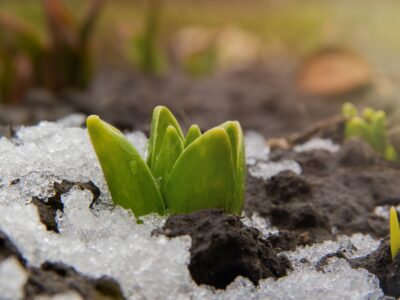How
Bulbs Do For Weeks Under The Snow During The Winter Bulb Life Cycle
In the winter, plants go dormant
Most
farmers plant spring bulbs in the fall. Until the actual cold sets in, bulbs
grow some roots. The bloom time, foliar energy collection, root and offset
development, and lastly, much-needed cold exposure are all part of the flower
bulb life cycle. In the winter, bulbs require cold exposure to break dormant
bonds and stimulate spring development. That is why "forced" spring
bulbs are chilled to give the requisite cooling hours for blossom development.
Dormant Flower Bulbs
are flowers that have been dormant for a long time
Plant
dormancy varies from variation to variety throughout the winter. It's mostly a
period of rest for bulbs, but there are a few things going on beneath the
surface. After blooming, it's best to leave the plant's leaves alone and simply
cut the wasted blooms. Allow it to revert to its original state. While the
foliage is still present, the plant is accumulating energy from photosynthesis,
which will be converted to plant sugars and used to power development and
blooming the next season. Bulbs that are left in the ground throughout the
autumn generate daughter bulbs, also known as offset bulbs, and roots. The
foliage dies back in the winter, and the most crucial portion of the flower
bulb life cycle starts.
The Dormancy of Bulb Plants
A
significant chemical reaction is going on beneath the snow and ice. Some roots
will grow deeper and continue to develop. The reduced day hours cause dormancy,
which causes the bulbs to cool for a period of time. Each bulb has a unique day
duration trigger as well as a unique cooling time. Due to the obvious cold, the
bulb breaks glucose into smaller molecules, lowering the freeze temperature and
preventing bulb damage. Leaves and stems structures and the precursor cells for
flower development begin to form as well.
Keeping Bulbs Safe
During the Winter
While
the bulbs will defend themselves from the winter frost on their own, the
gardener may assist. Plant bulbs at the correct depth, never near the soil's
surface. Mulch all around spent flowers to keep the soil moist and supply
nutrients gradually as the mulch composts. When you see the first signs of
green, pull the mulch away from the bulb zone. The structure will begin to send
out branches and blooms once the bulb has achieved its appropriate number of
chilling hours and the earth has warmed up a bit.






